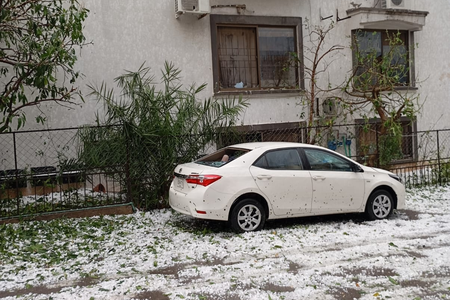A powerful hailstorm has struck parts of Pakistan, including Islamabad and the provinces of Punjab and Khyber Pakhtunkhwa (KP), causing widespread damage and claiming the lives of at least five individuals.
The severe weather has left significant destruction in its wake, with damaged properties, vehicles, and crops amounting to millions in losses.
In Islamabad, hailstones as large as golf balls pounded the city, severely damaging vehicles, including breaking windows at the iconic Faisal Mosque. Strong winds uprooted trees and power pylons, especially in the Tornal area, which was hit hardest.
Locals expressed shock at the intensity of the storm, with one witness recalling, “The hailstones fell like rain, smashing windscreens and damaging buildings. It was frightening.”
The storm also triggered flash floods in other provinces, with KP experiencing devastating impacts. In addition to traffic disruptions on the main Peshawar-Torkham Road, the floodwaters flooded streets, and one army personnel tragically lost his life when lightning struck his bunker in Landi Kotal. Flash floods also swept away cars and affected a camp housing Afghan nationals awaiting deportation.
In Charsadda, KP, the storm destroyed acres of standing crops, including wheat, vegetables, and fruit orchards, and uprooted trees. The local electricity infrastructure was also heavily damaged. Authorities, including the KP Provincial Disaster Management Authority (PDMA), have promised compensation for those affected.
Punjab also saw fatalities due to the storm. A wall of a mosque collapsed in Rawalpindi, killing one person, while in Gujar Khan, two lives were lost when a wall fell onto a passing trolley. A shopkeeper in Muzaffargarh died after lightning struck him.
The hailstorm, which came after a series of hot and dry days in Pakistan, is attributed to a combination of hot air from Punjab and cold winds from northern Iran, creating temperature contrasts that led to the extreme weather. Meteorological experts note that while hailstorms are not uncommon, such severe weather events, including unusually large hailstones, are becoming more frequent. -IANS





